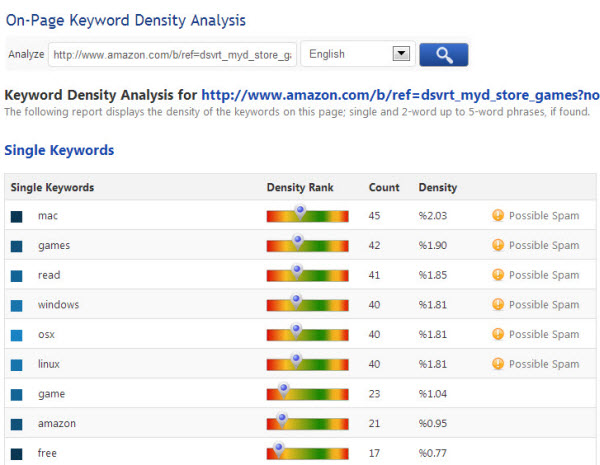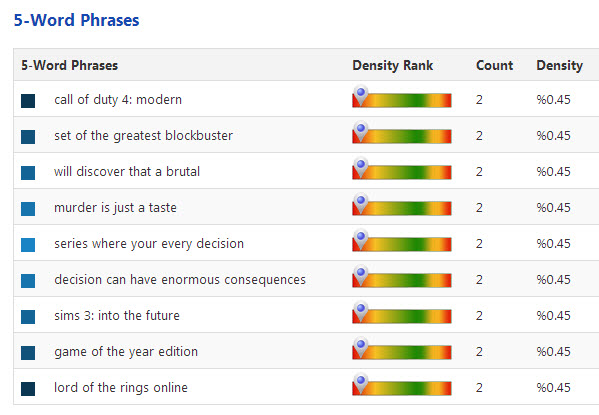
Posted by
Rank Ranger
Whether or not you have intentionally attempted to manipulate the
search engines with your keyword usage, what matters is what the search
engines “think”. Search engines can factor keyword
density into their formula for determining the degree a web page may –
or may
not – be relevant to a specific search keyword or keyword phrase.
Too many keyword occurrences can signal keyword stuffing and too few keyword occurrences can be an indicator of low significance within the context of the page content. Stuffing too many keywords into a page, or not using the right keywords, can negatively affect your site’s SEO.
Determining the status of a page manually could be time consuming, so to help you proactively prevent penalties for what
a search engine might deem to be keyword stuffing, Rank Ranger’s On-Page Keyword Density tool measures the
keyword density of any web page. By analyzing the number of times a
keyword
or phrase appears on a web page vs. the total number of words on that
page, we calculate and display the number of occurrences and keyword
density percentage.
Simply enter a page URL and click the button to begin your page analysis.

If
you see “Possible Spam” displaying in the results, that means based on the
calculation it is possible that search engines might consider that particular
keyword to be a spam attempt (i.e., keyword stuffing) and so we’ve set a flag
for you based on these parameters:
– If a
keyword or keyword phrase appears more than 30 times on a web page.
– If the
keyword density percentage is above 3.57
This
tool displays the density of the keywords on a page; single and 2-word up to
5-word phrases.

Run the On-Page Keyword Density analysis on any web page URL before and after content changes, or take advantage of its ability to spy on and effectively check your competitor’s keyword
usage and density.
You’ll find this new tool in the Ranger Lab, check it out and let us know how you’re using it. We’re always looking for new ways to help your SEO business run smarter, faster and easier! You can contact us by email, or jump into a conversation with us on Facebook or Twitter.




